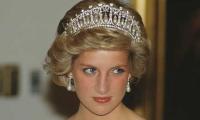Since the inception of Pakistan on August 14, 1947, we have become a nation that struggles to find an identity and, with it, meaning. The notion that Pakistan was created strictly for Muslims was somewhat diluted by Jinnah’s address to the Constituent Assembly a few days after Pakistan was created. The speech stated that the new nation carved out from India was a place for everyone and would guarantee equal religious freedom for all. Even at the time, the speech was suppressed by at least some sections of the media and has, since then, never been widely circulated.
Since then, there has been further confusion over the identity created at various moments in time. A crisis came when East Pakistan broke away in 1971, taking with it a huge chunk of the Subcontinent’s Muslims and the majority of united Pakistan’s population at the time. Other questions over identity have arisen periodically since then, with the uprising in Balochistan in the 1970s, the many dilemmas over the state’s ownership and interpretation of religion and strongly-held beliefs among various ethnic and lingual groups about their precise identity and their initial loyalty.
Most recently, we see a new problem with the increasingly overt attempts to pull ourselves towards the Middle East and the Arab world through the use of language. Changing the commonly used ‘Ramazan’ to ‘Ramadan’ to fit in with the Arabic pronunciation of the same term is just one example of this trend. The switch from ‘Khuda hafiz’ to ‘Allah hafiz’ is perhaps another. There are also other examples such as the use of ‘Suhur’ for ‘Sehri’ or the adoption of deliberately Arabic-sounding words to replace more common Subcontinental ones.
The trend continues in at least some quarters. In others, it has slowed down in response to reminders that a particular term does not alter anything about religious beliefs. It just makes it obvious that more and more people among us consider a particular culture to be somehow superior or one that should be emulated.
The fact is that Pakistan has no real identity at all. Attempts have been made at various points in time to dress it up in one. During the 1950s, Pakistan was a nation looking towards modernisation and a place on the globe as an economic power with progressive ideas, as men in important places donned smart suits and sharp ties while women took to ballroom floors or showed off their saris. Attempts to cut through this came periodically from the religious right following protests over language, the question of religion and other concepts pertaining to the state. Perhaps this is one reason why the lines of statehood and, with it, nationhood were never completely cemented.
Then we had the ‘socialism’ of Zulfikar Ali Bhutto with its short-lived efforts to raise the people above the elite. Bhutto’s own worldview and his basic betrayal of the philosophy he had put forward meant that this never quite worked. Although, in some ways, the impact of the empowerment of people brought in 1970 has can also be witnessed today. The days of Ziaul Haq’s stint in public office once again imposed, quite literally, a new veil over the country. A forced effort was made to impose a strictly Islamist identity on the country with new laws that reduced the rights of minorities and also other groups, including women.
The Saudis increasingly became the dominant external force in the nation as hard-line madressahs and religious organisations funded by them began preaching and setting up institutions everywhere. It has proved impossible to throw off the veil entirely, even though other faces of Pakistan have dared to peek out from behind it every now and then since the dramatic death of General Zia in 1988.
But even today, there is a lack of clarity over precisely who we are and what we believe in. For some reason, we find it far more necessary to assert our beliefs than most other Muslim countries do. The Ehteram-e-Ramazan Bill, which forbids people from eating and drinking in public during Ramazan and imposes a penalty for such acts, is just one example of this. Pakistan also joins Saudi Arabia as the only country in the world to strictly prohibit alcohol. The fact that the substance is freely and often quite openly used by many across the class divide does not seem to deter policymakers from continuing with their futile effort to impose a certain kind of thinking or, at least, create the idea that such thinking is a crucial part of the nation-state that we live in.
One result of this mystification over identity is our failure to embrace our diversity and accept it as an integral part of a country that is made up of people who speak over 90 different languages and follow various cultural and religious beliefs. The failure to list Parsis on the census form and the bewilderment reported among the census staff when persons surveyed identified themselves as Zoroastrians shows how much of our identity has been covered up.
It is difficult today to believe that the Punjab was once a province made up of nearly as many Hindus and Sikhs as Muslims. It is equally difficult for us to believe that some of the holiest sites for both these religions remain located in Pakistan’s part of the province which was ruthlessly sliced into two parts under the poorly drawn-up Radcliffe Line. The consequences of that division live on with us in many different forms. We are simply unwilling to face them or to accept a history which begins with a mass genocide and the largest dislocation of people in history.
If we are to find our identity, it is these realities we will need to look at. The efforts to draw closer to our distant Arab neighbours towards the West sometimes seem ludicrous. We do not speak their language, we have no shared history and no real sense of a culture, which varies between Arab lands at any rate. We have simply adopted a myth of what this culture should be and have tried to place ourselves within it. Beyond the diversity within our own country, the diversity of Islam – as it is practised in different Muslim countries – is seldom recognised.
The failure to create familiarity with this is one reason for the sectarian violence and hatred that has created new schisms within our own territory. Tolerance can be built only if there is a basic belief that difference is acceptable and does not alter the quality or degree of faith a person holds. Faith, after all, is an internalised, personalised belief shaped by the family, community, traditions and many other factors. It simply cannot be taken over by the state. When this happens, we are bound to run into trouble.
Certainly, we are already facing these problems. The lack of adherence in the country is a consequence of the failure to forge together an identity for Pakistan. Yes, we are patriotic – at least overtly. We raise slogans at the right time and don green at cricket matches or on Independence Day. But beyond this, we struggle to find togetherness with any real meaning. We fail to understand what our country is all about and, indeed, how it came to assume the contours that we see within it today, with many different forces shaping these divisions over the time that has elapsed since 1947.
The writer is a freelance columnist and former newspaper editor.
Email: kamilahyat@hotmail.com
MPAs ask for their salaries and benefits to be at par with high court judges and exempt from tax
This system fosters and places premium on VIPs, facilitating VIP culture, which is alive and kicking
Imagine this waste covering over 15,500 cricket stadiums, piled three meters deep every year
If there is one thing that can be gleaned from politics today, it is that we no longer speak same language
Postman argues that “typographic mind” was yielding to “televisual mind”
Pakistan is well poised to meet opportunities that Artificial Intelligence will offer for developments in industries







